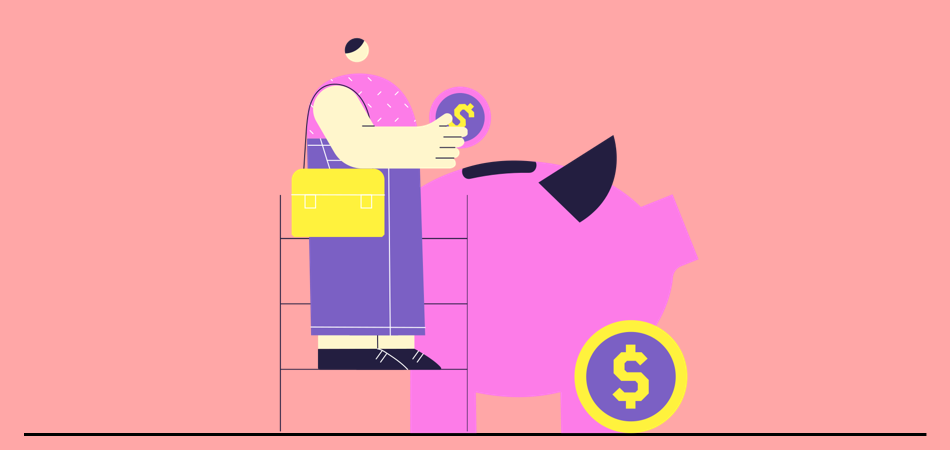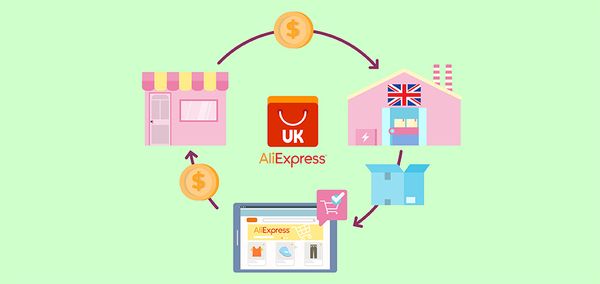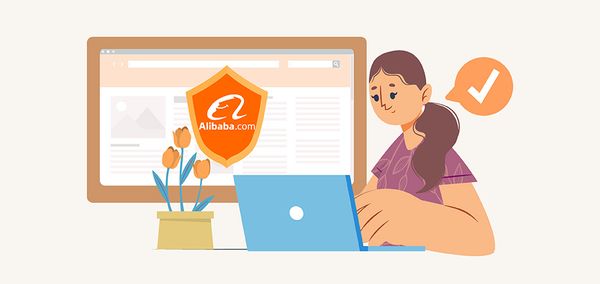How to Manage Your Cash Flow as a Dropshipper

Many businesses worry about their cash flow daily. Maintaining working capital on top of paying your staff, covering any overhead, and ordering new supplies can be a challenge.
Cash flow is crucial to profitability. Several people think generating consistent cash flow is simple if your business is also in demand consistently over time. Cash flow, on the other hand, is a more complicated issue, and it accounts for 90% of small business failures.
When you dropship, you are moving from a conventional supply-side management strategy that relies on several middlemen between your organization and the manufacturer to a strategy that relies on reducing the inefficiency of over-or under-stocking.
What Is Cash Flow
Cash flow measures how much money comes and goes from your business over a certain period. When you have positive cash flow, your business is receiving more money than it is expelling, so you can pay your bills and handle other expenses.
You can't make those payments if your cash flow is negative. Working capital is the concept of having the necessary funds to meet your financial obligations.
When it comes to managing the finances of a growing company, cash is king. Cash flow management is the solution to the problem of the lag between the time it takes to pay your suppliers and employees and the time it takes to collect payments from customers.
In its most basic form, cash flow management means delaying outlays of cash as long as possible while encouraging those who owe you money to pay it as quickly as possible.

Cash flow forecasts are not a window into the future. Your estimates take into account factors like your customers' payment histories, your diligence in identifying upcoming expenditures, and the patience of your vendors.
Ensure that you do not assume without cause that receivables will continue coming in at the same level as in the past, that payables can be extended to the same level as in the past, that capital improvements, loan interest, and principal payments have been calculated, and that seasonal sales fluctuations have been taken into account.
To begin your cash flow projection, add the cash on hand at the beginning of the period to the cash that will be received from other sources. You will have to gather information from sales representatives, service representatives, collections workers, credit managers, and your finance department.
Every time you ask, "How much cash is coming in from customer payments, interest earnings, collection of partial bad debts, and other sources, and when?", you're asking the same question.
The Relationship between Cash Flow and Revenue
Cash flow measures how much money comes in and goes out of a business. Revenue measures how much money comes into your business.
Finance activities are also taken into account when calculating cash flow: did the bank just deposit $10,000 into your account? Yes, it counts!
Why Cash Flow Matters
It's a well-known business saying: "Revenue is vanity, profit is sanity, cash is reality."
Cash is at the center of financial management. In the absence of cash on hand, your operations start to hit snags.
Managing your cash flow means determining when you will have cash on hand, determining how to get more of it on hand faster, and determining how to manage your spending to prevent cash flow problems.
Managing cash flow is a critical component of managing your company's finances.Once you've mastered that, you can start thinking about how to grow your business and increase your margins.
Top Tips for Dropshipping Cash Flow Management
1. Analyze Your Profitability
You should first ensure your business is making a reasonable profit. When your fundamentals are out of whack, no amount of cash flow management will make a difference.
Make sure each product and service performs well. Pricing your products appropriately and eliminating inefficiencies are key. Don't just chase sales, chase profit.
2. Managing Your Payables
Sometimes, top-line growth conceals a lot of problems. As a manager of a growing company, you have to keep an eye on expenditures. Do not become complacent by merely increasing sales.
Whenever and wherever you see expenses growing faster than sales, you should carefully examine costs and look for places to cut or control them. Using cash wisely involves several considerations:
- Utilize the creditor's terms of payment. You shouldn't pay a payment due in 15 days if it's due in 30 days.
- On the last day of the month, use electronic funds transfer to pay your bills. Your funds will remain available for as long as possible while remaining current with suppliers.
- Keep your suppliers informed about your financial situation. Trust and understanding will be needed if you ever need to delay payment.
- Consider carefully the discounts offered by vendors for early payment. You may have to take out expensive loans from your suppliers, but you might also be able to reduce your overall cost. It's all about the details.
- Choose suppliers based on more than just price. You may be able to improve your cash flow more by having more flexible payment terms.
3. Select the Correct Payroll Cycle
Employ a payroll structure that fits your revenue stream and meets wage and hour laws. Restaurants and retail businesses can cover payroll more easily with their daily revenue.
Manufacturers and wholesalers are frequently in need of cash, but this can prove challenging because cash isn't coming in as frequently.

The holding of cash to be paid less frequently than weekly may be beneficial, for example, semi-monthly or monthly, as long as applicable wage and hour laws permit you to do so. Find out if your state has any requirements for payroll frequency by checking with the Department of Labor.
4. Talk to Your Suppliers about Payments
The best way to improve cash flow may be to use suppliers with low prices, but flexible payment options may be more crucial. Be sure to inquire about payment terms with your suppliers. Your payments may be timed with your cash inflows.
5. Maintain a Strict Credit Policy
To ensure you get the cash you need, stick to your credit policies if you offer credit to customers. Follow these steps:
- Follow up immediately on late payments, send invoices promptly, and verify that you've been paid.
- Before extending credit to new customers, conduct a credit check.
- Implement a cash-on-delivery policy for chronic offenders and monitor your accounts for late-paying customers.
6. Get a Business Credit Card
Spending daily expenses on a business credit card can free up cash. Online banking makes it easy to keep track of these expenses. Utilize any rewards program that offers a certain percentage of cashback on purchases to reduce your expenses.
7. Plan Expenses
Consider timing your purchases rather than buying equipment and supplies when a need arises. By having a plan, you can track your expenses. Trying to retroactively list expenses, you do so after the fact. Planning purchases creates a tracking plan automatically.
Set an automatic payment schedule for utilities, rent, and insurance. You know when you will spend and how much you will spend on those dates.
8. Quickly Collect Receivables
Encourage your receivables to be paid quickly to increase cash flow. Here are some techniques you can use to collect receivables faster:
- Customers should be asked to pay a deposit when placing orders
- Reduce the price of outdated inventory strategically to move it
- Fast-paying customers should be rewarded with discounts
- Provide the option to pay online for invoices and invoices
9. Liquidate Assets If Possible
You might want to take a look at what assets you no longer need from your inventory if you have it. This is especially true during tough economic times.
Pay close attention to products that may not sell on their own. Buying them might be a novelty item or an add-on for another purchase. The economic downturn will cause customers to be more cautious with their purchases, so moving these items will be more difficult than usual.
10. Keep Costs Low, But Carefully
It's natural to want to reduce every "optional" cost your business has when the economy suffers and your business feels the impact. During hard economic times, cutting costs is a good strategy, but you should do it with great care.
When you have a slow calendar, you may want to pause a graphic design subscription that you use to make a few extra visuals for social media. It might also be wise to discontinue high-cost PPC campaigns that are eating up valuable resources but not driving sales.
If your supply chains are experiencing problems, you may be dealing with lower-than-usual stock and be unable to satisfy an influx of customers. Spending money on clicks that cannot be converted is the last thing you need to do.
By reducing your ad spend, you can shift towards more low-cost alternatives instead of high-cost campaigns. The cost of organic social media marketing, for example, is low, while the cost of email marketing is lower, but the success rate is still high. This can help your business generate valuable sales within your budget.
11. Evaluate Your Upcoming Expenses
Cash flow problems for businesses typically escalate when times are tough due to unexpected or forgotten costs.
It is easy to remember some expenses. Invoicing and credit card fees, payments to suppliers, payments to employees, or contractors may be part of your monthly costs.
Cash Flow Changes As a Result of Dropshipping
When it comes to applying a dropshipping strategy, there are a lot of factors to consider, including cash flow and the type of business you run.
Walmart, Costco, and Kroger, for example, may not be able to take full advantage of dropshipping supply strategies (they do have websites that allow for this order format), since most of their business occurs in their physical stores.
| Get Started Now to Grow Your Online Business with the Best AliExpress Dropshipping Tool - DSers! |
So, companies that manufacture products that customers need right away may have difficulty adapting to a dropshipping strategy. They should look to use dropshipping to supplement their existing cash flow instead of replacing it.
The majority of your orders will be placed online if you start dropshipping.
Wouldn't it be better to go to a physical location that carries the product or a substitute, rather than have it delivered to a supply center?
When incorporated into an e-commerce strategy, dropshipping produces the best results. For this reason, any company investing in a dropshipping strategy needs to first create an online presence and figure out how to drive organic traffic.
To ensure that your dropshipping venture makes the necessary cash flow to justify your company's presence in a market, you must increase organic traffic and strengthen engagement among your site visitors and your product fans.
Bottom Line
The goal of staying afloat in a recessionary economy like the Coronavirus is to find ways to improve your business's cash flow.
The process can be particularly challenging when customers are less likely to buy, demand shifts drastically for a particular item, and your sales forecasts are thrown off course. Forecasting inventory and finances has become more complex across the board.
In addition to freeing up working capital, these tips can also help keep your business operating smoothly until the world settles into its new normal.













 Company
Company
 Why Choose DSers
Why Choose DSers
 Blog
Blog
 Help Center
Help Center




 Live Chat
Live Chat